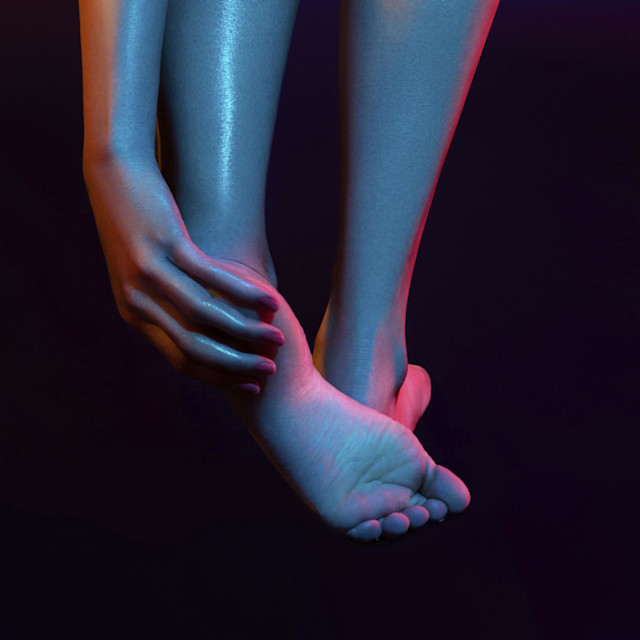Plantar fasciitis isn’t always the cause.
“Heel pain is a great imposter,” says Rock Positano, a doctor of podiatry and director of the Non-Surgical Foot and Ankle Service at the Hospital for Special Surgery in New York City. Of all the bones in the body, the heel has one of the largest blood supplies. With that heavy flow comes a higher risk of infection and other muscular problems.
Case in point: plantar fasciitis (PF), a condition that leads to inflammation and swelling in the thick tissues on the bottom of the foot (aka the plantar fascia) and accounts for about 10 percent of running injuries. If you have it, you’ll feel excruciating pain in one or both heels when you first step out of bed, an ache that fades as the hours pass but returns with full force the next morning. It can be treated with anti-inflammatories, arch supports, and stretches.
For prevention, focus on moves that increase range of motion in the ankles and hips, says Michael Ryan, CSCS, Tier X manager at Equinox’s downtown Manhattan locations. Both are important for proper gait, which is key for keeping the plantar fascia healthy.
That said, over-diagnosis is a big problem in medicine, adds Craig Liebenson, DC, member of the Equinox Health Advisory Board and director of LA Sports & Spine. Heel pain isn’t always PF—it often indicates one of these issues instead.
A plantar fascia tear
Positano’s research found that the majority of people with plantar heel pain had a plantar fascia tear. If you have a high arch, you’re more prone to this problem since you’ll place more force on the heel when you walk or run, he explains. Overuse can also up your risk.
The signs: You’ll experience PF-like pain, but you may also limp, notice swelling near the ankle, feel a “pop” in your foot with each step, or see bruising on the heel. Discomfort can last all day.
Next steps: Avoid stretching, which can worsen the tear, Positano says. A podiatrist may recommend a walking boot for shock absorption, a foot orthosis for support, or physical therapy techniques like Extracorporeal Pulse Activation Technology (EPAT) to boost circulation and speed healing.
Plantar fibroma
Sometimes fat accumulates between the heel bone and the fat pad at the very back of the foot, creating a ball of cells that pushes into the plantar fascia and causes pain. Experts aren’t sure why this happens, but it could be genetic.
The signs: You’ll have extreme aches or a visible bump in the heel or middle of the foot. “The pain usually comes on without warning, sometimes after wearing a tight shoe,” Positano says.
Next steps: See a podiatrist and ask about EPAT. You’ll likely have to use crutches and rest to take force off the foot.
A toe problem
Running in too-tight shoes can immobilize your big toe, Ryan says, which means you won’t be as stable and you’ll have to compensate elsewhere. In turn, your plantar fascia can become inflamed and overused because it’s trying to regulate mobility and stability for locomotion, Ryan says.
The signs: You could develop bunions and hypermobility of your ankle and foot joint. As a result, the inner parts of your arches, ankles, or knees fall inward when you step.
Next steps: Spend more time barefoot and wear shoes with wide toe boxes so you can properly receive impulses from the ground, Ryan says. Podiatrists, trainers, and fitness professionals who are certified to assess your gait can help you use your foot more efficiently to ease and prevent symptoms.
A bigger health scare
Since lots of blood runs through the heel, underlying health issues can manifest first as local discomfort. Pain could signify arthritis, fracture, infection, or tumors. These diagnoses are rare, but ruling them out is important, Liebenson says.
The signs: You’ll likely feel pain not only in the feet and ankles but also in the wrists and hands, where tendon attaches to bone, Positano says. “Lower back pain in the presence of heel or Achilles pain is another possible sign of systemic disease.”
Next steps: See a rheumatologist to strike out causes like rheumatoid arthritis and inflammatory diseases.
